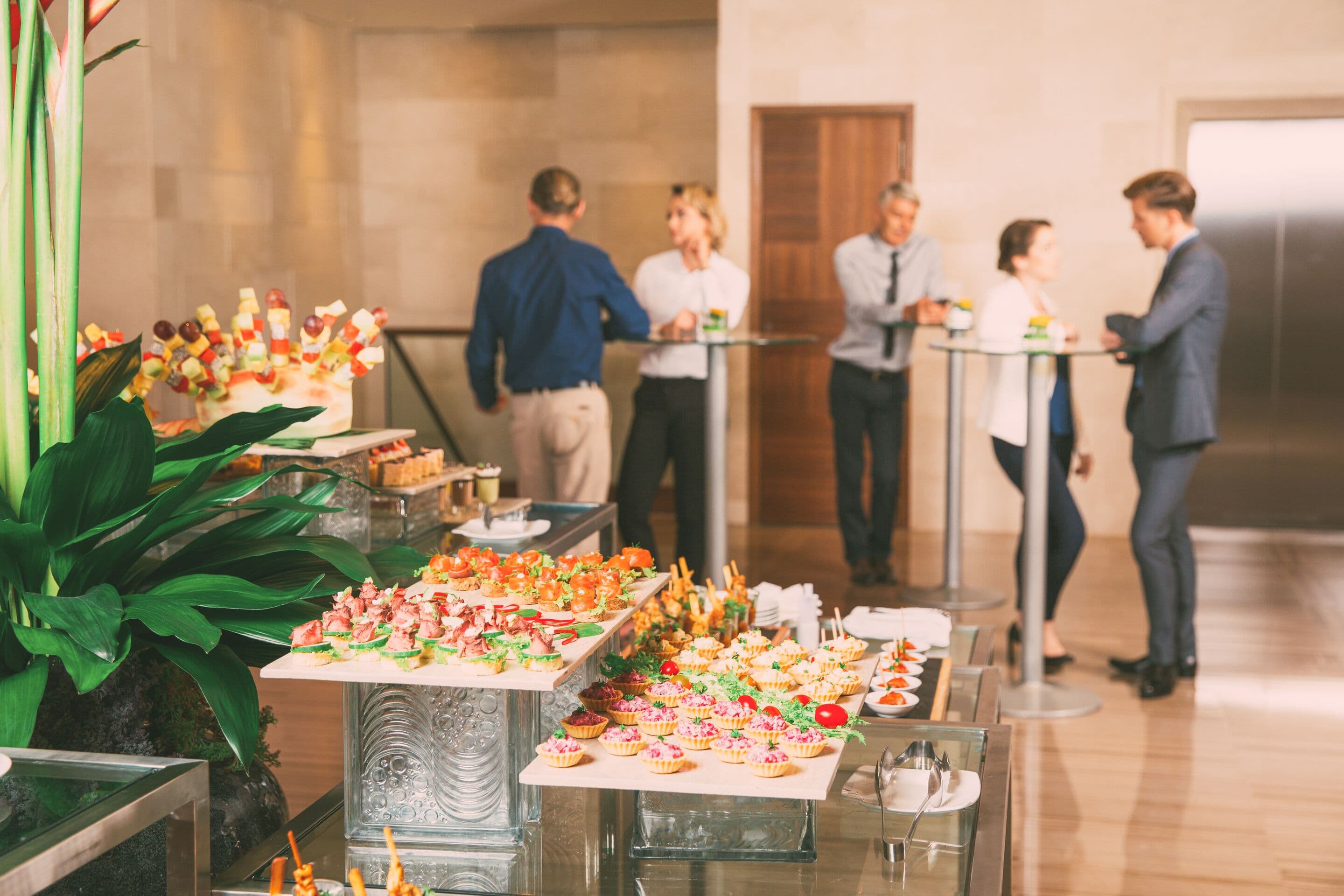The Hidden Menu: How Workplace Design Shapes How We Eat
Shauna McQueen, MS RD, Director of Nutrition and Well-being

From meeting times to workplace design, subtle cues at work quietly influence each bite you take.
What if I told you your workplace has a hidden menu? Not the one posted in the café, or the one you swipe through on a food-service app.
I’m talking about an invisible menu, the one made up of your physical environment, your workplace culture, the behaviors of your colleagues and leaders, and even your company’s unspoken norms around food and breaks. This hidden menu influences what, how and why you eat at work, whether you realize it or not.
Food Choices Aren’t Just About Willpower
Most of us like to believe our food decisions are rooted in logic. But research in behavioral science and food psychology shows this isn’t always the case.
Studies suggest we make more than 200 food decisions a day, and most of them are subconscious. We’re influenced by everything from plate size and lighting to how food is displayed or labeled. In the workplace, food cues are everywhere — things like access to snacks, the timing of lunch breaks or the general vibe around the break room or pantry.
Think about a common scenario: a bowl of candy at reception. Even if you didn’t plan to have something sweet, the sight of it may trigger a craving. Compare that to a fruit bowl strategically placed near the coffee station. That small environmental shift can lead to very different outcomes. The same holds true for vending machines, café line design or how long it takes to walk to a nutritious option versus quick grab-and-go/convenience items; these micro-barriers add up quickly.
Willpower alone rarely stands up against repeated environmental cues. That’s why organizations need to think intentionally about the food environments they create.
Workplace Culture Shapes Food Culture
Food is social, emotional and functional. And it doesn’t exist in a vacuum.
In the workplace, food is tied to belonging, productivity, focus, morale and identity. Whether employees feel pressure to work through lunch, celebrate with cake or avoid eating certain foods in the office, these micro-messages shape behavior and influence organizational culture. This is reinforced each day through available food options, how food is talked about, the events that include (or don’t include) food and how employee well-being is prioritized by leadership.
For example, if a manager schedules meetings consistently over the lunch hour, employees may feel obligated to skip meals or eat hurriedly at their desks. Over time, this behavior becomes normalized. Leaders who encourage team meals or provide structured breaks signal that nourishing yourself is part of doing good work, not separate from it.
Food can also be a marker of inclusion. When workplaces provide meals that consider dietary needs, cultural traditions or sustainability values, employees feel seen and respected. When those needs are overlooked, employees may feel excluded, sometimes in subtle but lasting ways.
We’re Not Just Talking About Lunch
These invisible nudges don’t just affect what someone eats each day. Over time, they can shape food preferences, eating patterns and long-term health outcomes, for better or worse.
A workplace that subtly promotes fast eating, low-nutrient foods or skipped meals may inadvertently reinforce habits that spill into life outside of work. That means less energy for physical activity, more highly processed or convenient foods and a greater risk for burnout, chronic stress or metabolic disease. On the flip side, a workplace that makes nutritious options available, easy to select, appealing and socially supported through programming can help people build habits that ripple outward, improving focus at work and well-being outside of a 9-to-5 schedule.
This is where the concept of food as fuel takes on a bigger meaning. When organizations align their food environments with their values — sustainability, innovation or employee well-being — they’re not just feeding people. They’re reinforcing a brand story and investing in human capital. Imagine the ripple effect if every coffee chat came with access to healthy snacks, or if large company meetings included thoughtfully designed menus and food landscapes that truly enhance employee health and inspire wholesome choices that shape both well-being and the overall culture.
Food design also impacts equity. For employees who rely on workplace meals as a primary source of nutrition, whether due to time, financial or caregiving constraints, the hidden menu has an outsized influence. When companies prioritize healthy and inclusive options, they help level the playing field.
Looking Ahead
In the next part of this series, I’ll share how to design your food environment and culture with intention to support whole-person health, including practical strategies you can implement in partnership with your food services provider, facilities team and leadership.
If you’re attending CoreNet’s North American summit this October, I’ll be diving deeper into this topic during my talk, “The Hidden Menu: How Workplace Design and Culture Shape How You Respond to Food at Work.”
Until then, pay attention to your next three food choices at work. Take a moment to look around your workplace and ask yourself: what’s on your hidden menu, and who’s designing it?


